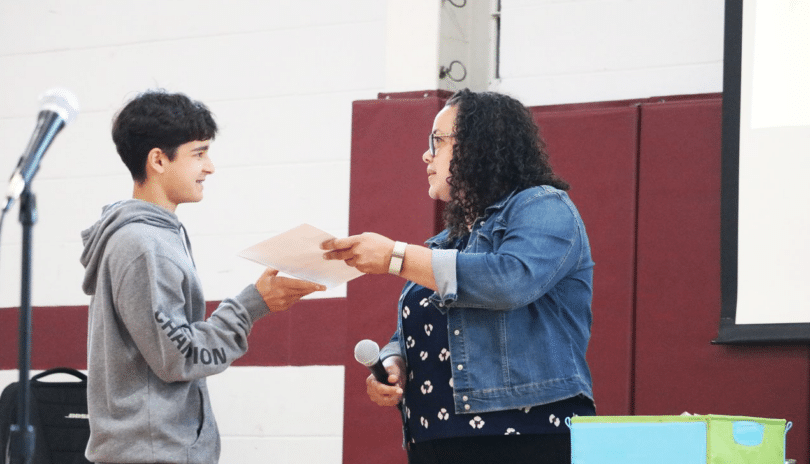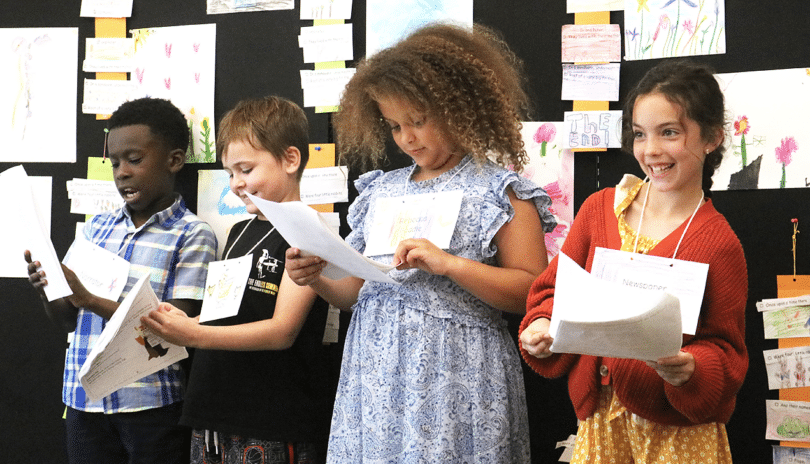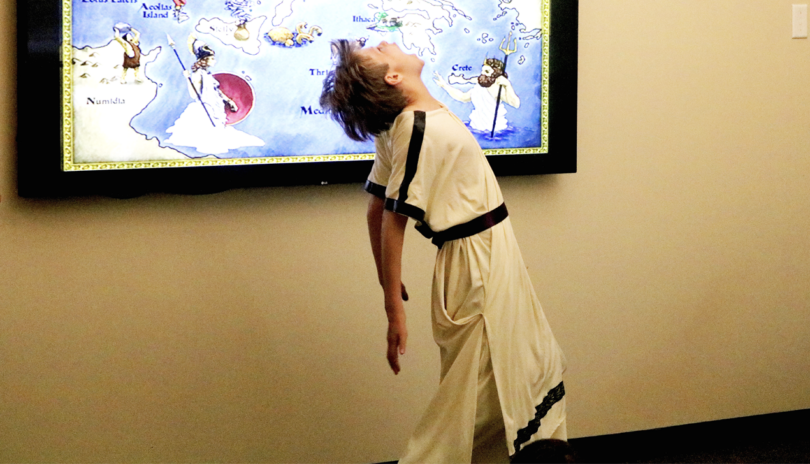In the Grade 8 Facing History and Ourselves course, students investigate the connections between personal identity, individual choice, and the processes of history. The central case study of the FHAO course at DCD is the rise of the Nazi Party in Germany in the first half of the Twentieth Century, including the eventual outbreak of World War 2 and the implementation of the Holocaust.
In a culminating project, students are asked to research a topic of their own choosing that connects to the course material, which includes thematic connections as well as historical events and outcomes. They then design a presentation or project to present their findings to the class. Mae Barbuto Pelletreau chose to research how the CIA funded exhibitions of abstract expressionist art in a Cold War propaganda campaign designed to showcase American freedoms in the cultural sphere.
For Mae’s presentation, she projected a single slide in the Valentine Center that posed the provocative question “Why would the CIA fund modern art?” She then moved the entire grade outside, where she had set up tarps and painting supplies for each student (and a handful of teachers) to make expressionist, non-representative paintings of their choosing. Paintings complete, the class returned to the Valentine Center, where Mae presented what she had learned about the CIA, the Museum of Modern Art, and a US Cold War policy that reflected what President Dwight Eisenhower would state directly in his address at MoMA in 1954: “As long as our artists are free to create with sincerity and conviction, there will be healthy controversy and progress in art. How different it is in tyranny. When artists are made the slaves and tools of the state; when artists become the chief propagandists of a cause, progress is arrested and creation and genius are destroyed.”
In talking with Mae about why she chose this particular subject, she shared, “I knew I wanted to do something interactive to really catch everyone’s attention, and because I love art, I knew I wanted to do something related to art. But not knowing exactly what I wanted to do, I went to Mr. Thacher for ideas. He suggested researching the CIA funded exhibitions, he gave me three words to begin my research, and from there I got really into it.”
Mae went on to explain, “To make my project interactive, I brought everyone outside, each person was given paint, paper and a popsicle stick, and they got to paint for a few minutes. I thought it would be chaotic, but it was really quiet and peaceful—everyone was chatting while they painted, and it was really nice. I think everyone really took something away from my presentation—because it was such an interesting topic, but also because it was interactive and fun.”
The collected grade eight paintings from Mae’s project currently hang together on the bulletin board outside the Valentine Center. Well done, Mae!







